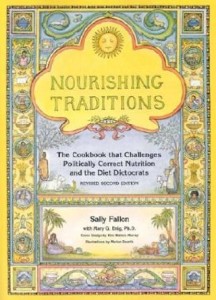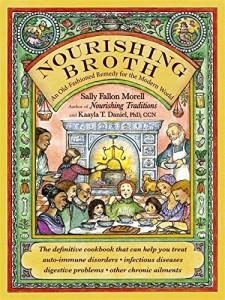Nourishing Encounters: Bieler Broth
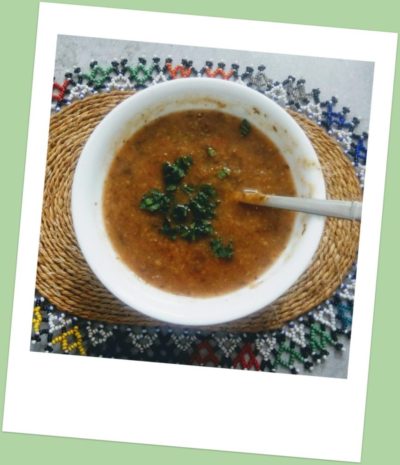

I was recently reminded about Bieler Broth and decided to make some. It’s a great tonic developed by the late Dr. Henry Bieler as a restorative when under stress, when your adrenals are depleted, great for fasting (under supervision of a health care practitioner), detoxification, and for energy and health in general. I always cook with health benefits in mind, so I thought the broth would be a great pick-me-up for my family.
I went to my Nourishing Traditions cookbook (the food “bible” of the Weston A. Price Foundation) for Dr. Bieler’s zucchini, string beans, celery, and parsley based recipe. Dr. Bieler believed that this combination of vegetables would restore the acid-alkaline and sodium-potassium balances so critical for our organs and glands.
All of the ingredients in this broth have been chosen for their nutritive properties. Along with supporting the acid-alkaline and sodium-potassium balances, they also provide significant other nutritional benefits. Here is an idea of how they can each help you.
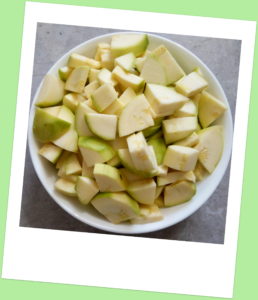
Zucchini /summer squash:
- Contains many antioxidants including the carotenoids lutein and zeaxanthin which are important for eye health. The skin of the zucchini is particularly rich in these antioxidants so it’s best not to peel them (a mistake I’ve been making)
- Is rich in pectin a special polysaccharide that has been repeatedly shown, in animal studies, to protect against diabetes and improve insulin regulation
- A good source of B Vitamins needed for proper metabolism
- Contains Omega 3 fatty acids, important for heart health
- Is anti-inflammatory
- Improves digestion
- Helps regulate blood sugars
- Supports the adrenal system
- May have anti-cancer properties
- The dried seeds, eaten in medicinal amounts, or extracts of seed oils have anti-microbial effects, and can possibly support prostate health[1]
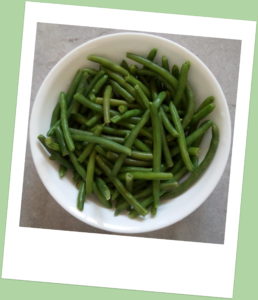
Green beans
- Contain an impressive array of antioxidants
- Has anti-cancer properties
- Anti-inflammatory properties which are important to the prevention of type 2 diabetes
- Contains alpha-linolenic acid(ALA) – an Omega 3 fatty acid important to heart health
- Contain an good amount of silicon, important for bone and connective tissue
- Is high in fiber [2]
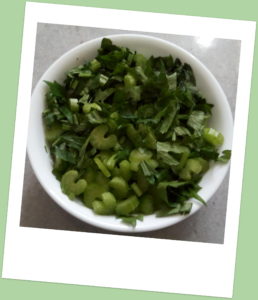
Celery
- Important source of antioxidants protective of unwanted oxidative damage body fats and blood vessels,
- Anti-inflammatory,, helps prevent inflammation in the digestive tract and blood vessels, can help protect the digestive tract and liver from acrylamides (those dangerous substances formed when frying foods)
- Can help to relax blood vessels thereby lowering blood pressure
- Possible anti-cancer benefits
- Celery seeds, celery oil, or celery extracts – not the whole food itself, contain phthalates, substances which may act as diuretics to help lower blood pressure [3]
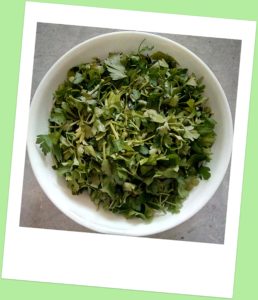
Parsley, which I discussed in my previous post, is a herb with many health benefits. Those benefits are the reasons why I prefer to eat it rather than treat it as garnish, or throw it out after cooking.
- Parsley’s volatile oils have been shown to inhibit tumors, particularly in the lungs, neutralize some carcinogens (like those of cigarette smoke and charcoal grill smoke) and to help activate the enzyme glutathione-S-transferase needed for the antioxidant glutathione to work properly
- A great source of antioxidants
- Rich in folic acid, one of the B Vitamins which helps reduce homocystiene levels, important for heart health, and promotes proper cell division [important for the developing fetus-cl]
- Rich in Vitamin C, associated with lower incidences of arthritis[4]
Here’s the basic recipe per Nourishing Traditions, revised second edition, page 608 (my comments in square brackets):
- 4 medium zucchini or summer squash washed, ends removed, and sliced
- 1 pound string beans [a little less than ½ kilo]
- 2 sticks celery chopped (optional)
[Since they are referring to the wider “American” celery, if you are using the thin Israeli celery then you might want to increase the amount] - 2 bunches parsley, stems removed (optional) [I use the thin part of the stem, only removing the thicker ends]
- Fresh herbs such as thyme or tarragon, tied together with string (optional)
- 1 quart filtered water [approximately 1 liter]
- Whey (optional) [NOT powdered whey protein*]
Nourishing Traditions also has an “epicurean” version of the broth (page 226) which includes tomato paste, a smaller quantity of vegetables, paprika, and sea salt or fish sauce. Also suggested is using chicken stock instead of water. [If you make fish stock, you can substitute the fish stock for the water.]
“Improper foods cause disease; proper foods cure disease”
Dr. Henry Bieler
Here’s how I made it:
- Zucchini – We had small round summer squash in the house so I used 8 of those figuring that they would be more or less the equivalent.
- String beans (aka green beans or French beans) are, unfortunately, not available fresh this time of year, so we purchased frozen ones.
- Celery – I also used the leaves
- Parsley – I only removed the thick stems and left the thinner stems
- Water – I actually ended up using 3 quarts in order to cover all the vegetables
- Tomato paste – I used between ½ to ¾ cup
- We prefer eating the herbs as part of the soup, so rather than tying them up, I chop them up before throwing them into the pot
How I prepared it:
- Put water, vegetable, herbs, and tomato paste into a pot and bring to a boil, skim, and let simmer for half an hour. Do not overcook.
- Remove the herbs if you don’t want to eat them.
- Vegetables can be eaten whole with the liquid or blended into a thick soup with a hand blender. I blended everything together for a nice, thick soup.
- Leave the soup sit for a day in the fridge so that the flavors can blend.
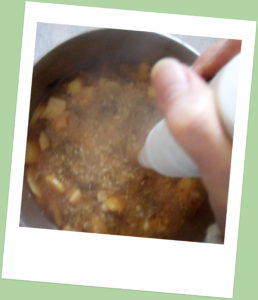
Another method for preparing the soup (which I did not do this time) is to saute the herbs and vegetables in olive oil before adding the water. This blends the flavors and the soup is tasty when eaten right away.
*If you don’t use whey, you might like to add some full fat sour cream or plain full fat yogurt.
Footnotes:
[1] World’s Healthiest Foods, Zucchini
[2] World’s Healthiest Foods, Green Beans
[3] World’s Healthiest Foods, Celery
[4] World’s Healthiest Foods, Parsley
Related Products
Nourishing Broth:
An old-fashioned remedy for the modern world
